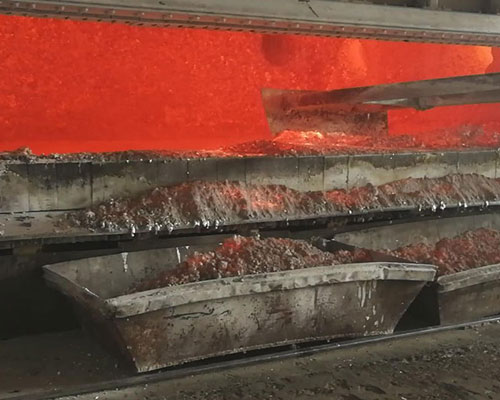Molten Aluminium Refining usually has strict requirements on the internal structure, quality, chemical composition, and mechanical properties of aluminium, especially in terms of grain size, pores, slag inclusions, and cracks. The control is very strict, and the above electrolysis The only characteristics of molten aluminium cannot meet the requirements for the production of aluminium blanks, so a series of processing operations such as cooling, adjusting composition, refining, and heat preservation and standing must be carried out before casting.
The economic benefits obtained by using electrolytic aluminium liquid to directly produce aluminium blanks are mainly embodied in two aspects: energy saving and reduction of aluminium loss. First, the two processes of casting molten aluminium into aluminium ingots and remelting and heating the aluminium ingots can be omitted. This aspect reduces the 0.4%-0.5% aluminium loss in the process of casting the aluminium ingot from the molten aluminium and the 2%-4% aluminium loss in the secondary remelting process of the aluminium ingot. On the other hand, when aluminium ingot is remelted, heating 1t aluminum ingot from room temperature to smelting temperature of 750℃, theoretically requires about 1.21×10^9J, which is equivalent to electric energy of 337kWh and 30kg of heavy oil. It can be seen that using electrolytic aluminium liquid directly to produce bad aluminium profiles can reduce energy consumption.

In the process of alumina electrolysis, it is inevitable that the molten aluminum contains gas and impurities. Therefore, molten aluminium refining is one way to ensure the quality of aluminum products.
After aluminium liquid transfer, cooling, composition adjustment, refining, slagging, standing, etc., buried and allowed to be stirred, the hydrogen content in the aluminium liquid can be reduced to 0.15m/100gAl, and the amount of oxidized slag inclusion is less than 0.05%. The Na content is reduced to t(Na)0001% or less. Through sampling analysis and testing, after passing the test, sprinkle the covering agent on the surface of the molten aluminium, and let it stand for 20-30 minutes to start casting.

